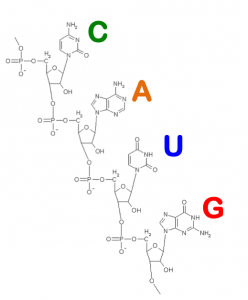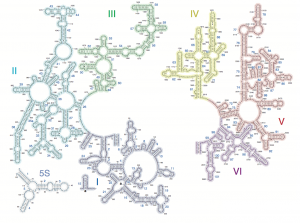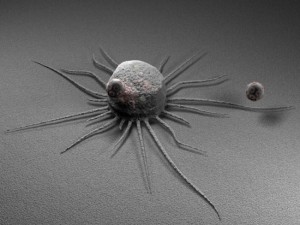I am a great fan of Foldit, a protein-folding game I have mentioned several times here (my first posting about Foldit was Aug. 6, 2010) and now via the Foresight Insitute’s July 16, 2012 blog posting, I have discovered an RNA video game (Note: I have removed links),
As we pointed out a few months ago, the greater complexity of folding rules for RNA compared to its chemical cousin DNA gives RNA a greater variety of compact, three-dimensional shapes and a different set of potential functions than is the case with DNA, and this gives RNA nanotechnology a different set of advantages compared to DNA nanotechnology … Proteins have even more complex folding rules and an even greater variety of structures and functions. We also noted here that online gamers playing Foldit topped scientists in redesigning a protein to achieve a novel enzymatic activity that might be especially useful in developing molecular building blocks for molecular manufacturing. Now KurzweilAI.net brings news of an online game that allows players to design RNA molecules …
Here’s more from the KurzwelAI.net June 26, 3012 posting about the new RNA game EteRNA,
EteRNA, an online game with more than 38,000 registered users, allows players to design molecules of ribonucleic acid — RNA — that have the power to build proteins or regulate genes.
EteRNA players manipulate nucleotides, the fundamental building blocks of RNA, to coax molecules into shapes specified by the game.
Those shapes represent how RNA appears in nature while it goes about its work as one of life’s most essential ingredients.
EteRNA was developed by scientists at Stanford and Carnegie Mellon universities, who use the designs created by players to decipher how real RNA works. The game is a direct descendant of Foldit — another science crowdsourcing tool disguised as entertainment — which gets players to help figure out the folding structures of proteins.
Here’s how the EteRNA folks describe this game (from the About EteRNA page),
By playing EteRNA, you will participate in creating the first large-scale library of synthetic RNA designs. Your efforts will help reveal new principles for designing RNA-based switches and nanomachines — new systems for seeking and eventually controlling living cells and disease-causing viruses. By interacting with thousands of players and learning from real experimental feedback, you will be pioneering a completely new way to do science. Join the global laboratory!
The About EteRNA webpage also offers a discussion about RNA,
RNA is often called the “Dark Matter of Biology.” While originally thought to be an unstable cousin of DNA, recent discoveries have shown that RNA can do amazing things. They play key roles in the fundamental processes of life and disease, from protein synthesis and HIV replication, to cellular control. However, the full biological and medical implications of these discoveries is still being worked out.
…
RNA is made of four nucleotides (A, C,G,and U, which stand for adenine, cytosine, guanine, and uracil). Chemically, each of these building blocks is made of atoms of carbon, oxygen, nitrogen, phosphorus, and hydrogen. When you design RNAs with EteRNA, you’re really creating a chain of these nucleotides.
…
Scientists do not yet understand all of RNA’s roles, but we already know about a large collection of RNAs that are critical for life: (see the Thermus Thermophilus image representing following points)
- mRNAs are short copies of a cell’s DNA genome that gets cut up, pasted, spliced, and otherwise remixed before getting translated into proteins.
- rRNA forms the core machinery of an ancient machine, the ribosome. This machine synthesizes the proteins of your cells and all living cells, and is the target of most antibiotics.
- miRNAs (microRNAs) are short molecules (about 22-letters) that are used by all complex cells as commands for silencing genes and appear to have roles in cancer, heart disease, and other medical problems.
- Riboswitches are ubiquitous in bacteria. They sense all sorts of small molecules that could be food or signals from other bacteria, and turn on or off genes by changing their shapes. These are interesting targets for new antibiotics.
- Ribozymes are RNAs that can act as enzymes. They catalyze chemical reactions like protein synthesis and RNA splicing, and provide evidence of RNA’s dominance in a primordial stage of Life’s evolution.
- Retroviruses, like Hepatitis C, poliovirus, and HIV, are very large RNAs coated with proteins.
- And much much more… shRNA, piRNA, snRNA, and other new classes of important RNAs are being discovered every year.
I do wonder about the wordplay EteRNA/eternal. Are these scientists trying to tell us something?


